No products in the cart.
It’s a Wrap!
As the countdown for the summer vacations begin, your excitement and joy can be marred by the panic surrounding packing up the classroom. In this article, Shahrezad Samiuddin outlines tips for organising and packing up the classroom that will make the task easier now, and make settling in a breeze when it is time to come back to school.
Take pride in how far you’ve come. Have faith in how far you can go. But don’t forget to enjoy the journey. – Michael Josephson
It is summertime and while you have had a great year, you probably also feel like rushing out and celebrating the last bell on the last day of school alongside your students. While everyone is entitled to their little end-of-year celebratory ritual, if you do it after packing up your classroom the joy will be that much more satisfying and truly deserved.
Unless you have been super-organised throughout the year, you are most likely looking around your classroom and feeling a little daunted by the prospect of tackling it. Questions such as ‘Where do I start?’ and ‘Where do I put all of this?’ that swirl around in your head are enough to make you sit back and leave it all for the day when you are feeling braver and more ready to face your classroom clutter. However, that path is one that will surely lead you down a road where you are likely to be left with just a day to go and a panicked urge whereby you want to tip everything into two boxes and be done with it. That may seem like a swift solution, but is quite deceptive because the clutter monster will rear its ugly head once the boxes are reopened and you have a nasty tangle of supplies and stuff to wade through. So listen to that voice of sanity in your head that tells you that the best time to start packing up your classroom is right now, a few weeks before the academic year comes to an end.
Put in a bit of planning around how you wrap up the classroom, and you can avoid horrors such as damaged and missing supplies when the New Year begins. Planning will also help you avoid undue stress in case you are moving classrooms at the beginning of the new academic year. Here are a few tips that will make packing up for the summer easier to do.
Starting Early
That’s right. The end of the year is nigh and everyone’s counting the days, so do not wait for the time when the last student has left to start organising things and packing up your classroom. Let’s be honest, we are all human and you may not be in a mood to do anything even mildly uninteresting once the students have left for the summer. If you are like most teachers, you do not want to be left behind with the masking tape in hand, so begin slowly, but do it now by packing away anything that you are not using. Are there any books that are not being used? Any display boards that you can remove? This is the time to pack them away. Are there any items you want to preserve for next year? Get them covered, folded or laminated now.
Photograph it
Was this a year where you finally had a classroom setup that worked well? Was there an item that really worked for the students and you? If something worked, instead of jotting it down in a diary for future reference, could you photograph it? Taking pictures of your room is quick and simple. With a handy photographic reference ready, you will not need to reinvent the wheel when you come back next year. You will be able to recreate the same room without wondering how on earth you managed to fit all of your supplies on that tiny shelf.
Extra hands
Need help with the clean up? Can you get some of your students involved in the Great Pack Up? Willing students can stay back after school and help you organise your things. Packing with students will also provide you with the opportunity to revisit and review some of the concepts that they have learned during the year, in a relatively relaxed way. So do talk about some of those characters and plots when you are packing the literature books.
If you teach younger students, they can help by doing easier tasks, such as sorting classroom stationery. You can ask them to help out by sharpening colour pencils, testing and discarding dry markers and sorting the crayons. Donate anything that you can and bring a special treat as appreciation for those helping you out.
Chuck it!
Some teachers can be hoarders. This is understandable especially when supplies are scarce. However, while that may seem wise, hoarding is not always a good idea. So harden your heart and learn to throw things away. For instance, that chart you have been holding onto may look like a treasure, but it is faded and honestly, do you really need it? The problems with such ‘treasures’ is that they tend to accumulate and soon you have a classroom overflowing with ‘treasures’ taking up valuable space and getting in the way of some serious clutter busting.
The key to being organised is to throw things away or donate stuff that you no longer use. Anything broken, faded or with missing pieces needs to go. If chucking things is not your natural instinct, keep reminding yourself as you declutter that a cluttered classroom is a disorganised one and that you do not need to keep everything.
Look out especially for things that you did not use all of this year and seriously think about getting rid of them or passing them onto another teacher. If you have space in the staffroom, you could display it on a table and spread the word that you are giving it away. Remember, one man’s trash is another man’s gold!
Planning ahead
When you are packing, really plan ahead. Instead of putting everything into one big box, only to rummage endlessly through it when you get back, consider packing by areas of your classroom. That means packing everything that sits on your desk in one box and marking it ‘Desk.’ This way when you get back, imagine the ease with which you will be able to set up your desk, which will inevitably be the first thing you need to do. Do the same with the bookshelf and the classroom library and any other part of the classroom that you feel will lend itself well to being packed in this way. This is a simple idea and if you work through the room like this, it will make unpacking that much easier when you get back after the summer.
You can take planning ahead to another level, if you generally plan for the first week after you get back. This year, plan your topics and activities now. Get all the resources you will need in one place and also have and handouts you may need, photocopied and ready. File them and put the lot in one of the boxes you will open as soon as you get back. The key is remembering that you have everything ready, because in case you don’t you might find that you face needless stress and have double the number of photocopies, at a time of year when the photocopy machine is already working in overdrive.
You have worked hard all year and a great pack up plan is just the thing to round off the year. Do not get overwhelmed, or procrastinate, because when you have a plan, you can tackle pretty much anything.
References:
http://www.scholastic.com/teachers/top-teaching/2012/05/closing-classroom-%E2%80%94-do-list
http://attalim.ekhwan.com/index.php/2011/06/07/74/
May 2013

